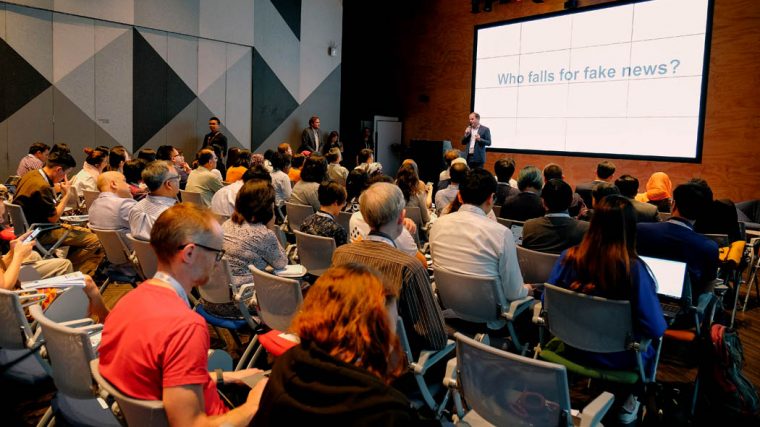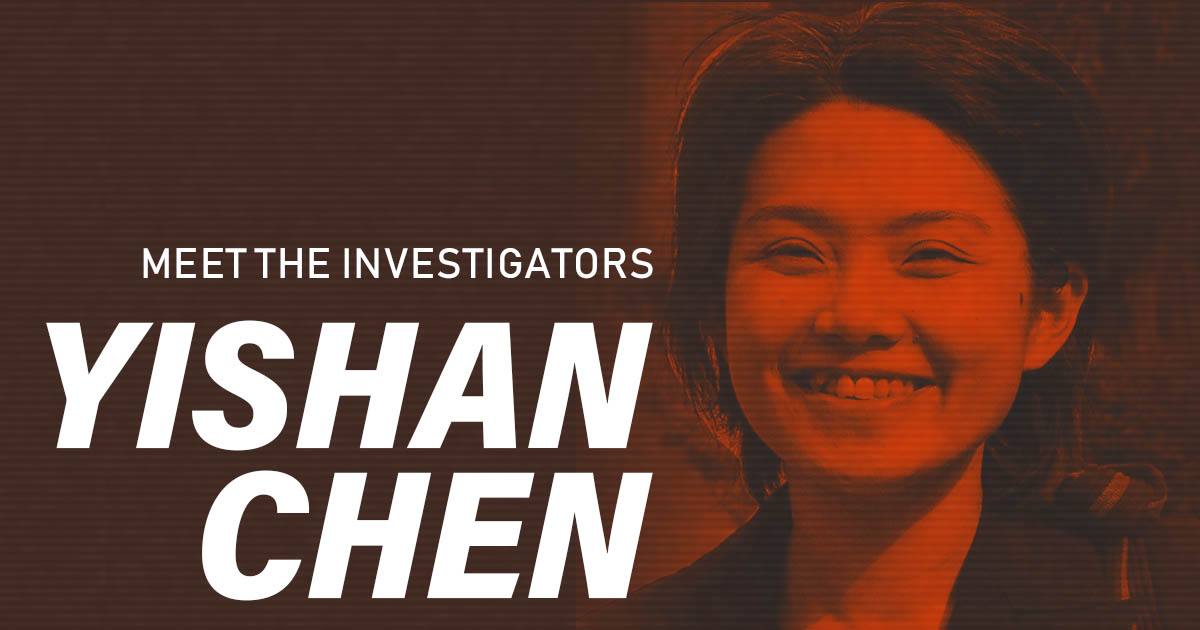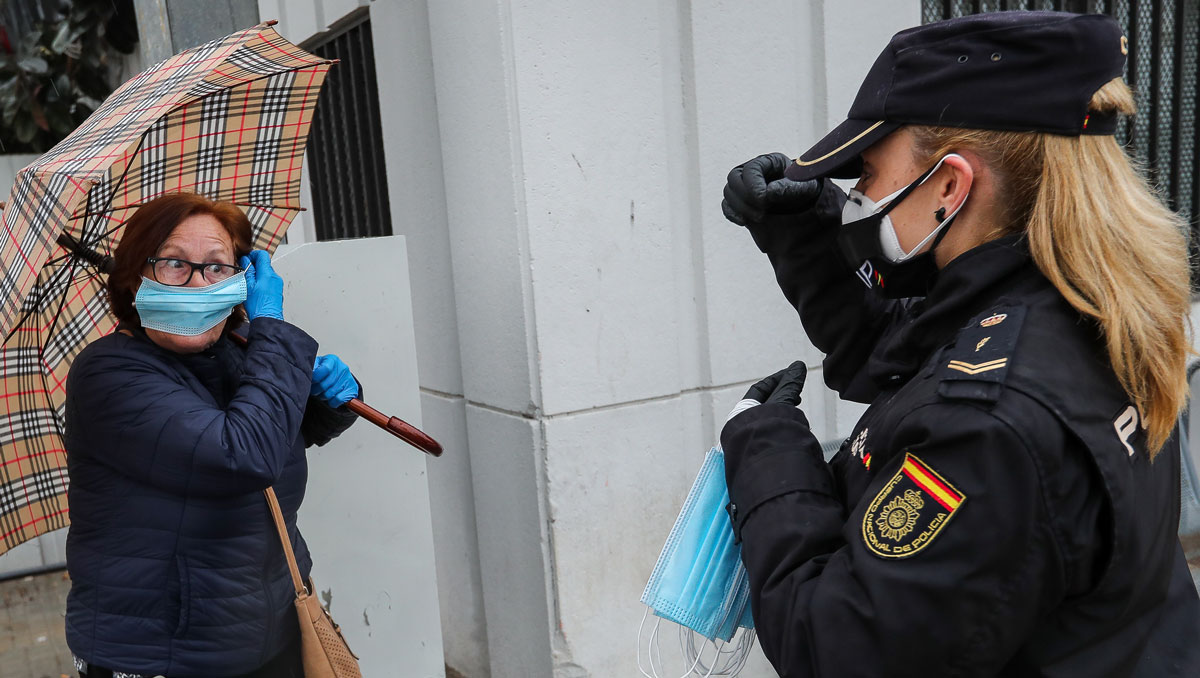MEET THE INVESTIGATORS
On a mission to ‘build the future of health news’ amid a global pandemic
Syed Nazakat operates India’s first data-driven website dedicated to healthcare reporting, where he and his team have been on the frontline of reporting on COVID-19.

The International Consortium of Investigative Journalists collaborates with hundreds of members across the world. Each of these journalists is among the best in his or her country and many have won national and global awards. Our monthly series, Meet the Investigators, highlights the work of these tireless journalists.
Syed Nazakat is a veteran reporter and the editor-in-chief of DataLEADS, a Delhi-based digital media company that conducts data analysis and journalism training across the region, and operates India’s first data-driven website dedicated to healthcare reporting. Nazakat also founded and leads the Centre for Investigative Journalism, a nonprofit organization that promotes watchdog journalism in India. We interviewed him as many countries mark the first anniversary of lockdowns and other measures to fight the COVID-19 pandemic.
How did you start covering health?
I never covered health as a journalist. I started my career with a weekly column for children in a local newspaper in India. Then as a full-time staff correspondent, for 16 years, I covered political situations, conflicts, wars and armed insurgencies and social and development issues in some 30 countries. I interviewed politicians, spy masters, drug dealers, foot-soldiers of Al-Qaeda in Afghanistan, prisoners in rehab camps in Saudi Arabia and military detention facility in Guantanamo Bay, Cuba. It was about 2013 when I started to notice an increasing availability of open-source data in India and elsewhere. [I thought:] “How to make sense of this data? How to use it for storytelling and empowering people. How to build intersections between data, technology and media?” During a breakfast conversation with my partner, Sabba, who is a healthcare professional, a precise idea about starting a data-driven platform took shape.
Why did you feel the need to have an outlet focused on health in Asia?
We’re living through an extraordinary period in history. Today, we are producing more information than we will ever be able to consume. At DataLEADS our mission is to empower people with information because equal access to information will protect lives and enrich and advance societies. Traditionally coverage of health events has been sporadic. But at the same time, we are witnessing more and more people are going online for health information than ever before. Do they really find what they are searching for? Will they be able to understand unstructured information [data] which remains largely stored in silos? This is where we come in. Our aim is to build the future of health news and data by collaborating with journalists, doctors and data scientists. The pandemic has just underlined how important it is to devote more resources to cover health more extensively.
What are the challenges of covering health in the region?
There’re a number of challenges. Newsrooms are not well-equipped to make sense of data. Even in big media organizations in Asia, there are still no dedicated teams for data visualization. There are fewer resources and [smaller] newsgathering budgets allocated to public health and science reporting.
Fact-checking online health content is also not mainstream. Currently we are seeing a tide of medical misinformation, myths, unscientific claims, inaccurate data and bogus treatments. While some of this information may only result in a little confusion as to what you should eat or how much exercise you need, other [fake news] can have more serious effects.
Health Analytics is a data-driven project. What kind of additional value does data bring to this beat?
If you look at health as a beat, there is increasing demand for information that is based on data. We see this in the current pandemic, where reporting is centered around quantitative measures such as exponential growth rate, case fatality rate, and even predictive modelling. In our own work at Health Analytics Asia, we utilize data in different ways. We collect and clean data and make it available in [spread] sheets for readers, researchers and policy makers. We visualise and map data. We do interactive visualizations based on data collected from various open sources.
What’s the value of fact-checking health data, and how do you do that?
The internet is awash with harmful information related to health. Data and health together can be tricky to deal with because data related to health is often trusted blindly. We have conducted data verification on different public health subjects including rabies, TB [tuberculosis], cancer, suicides and more recently on COVID-19. We verify data by checking it for accuracy and inconsistencies, including typos or inaccurate numbers exported from PDF files and other documents. We use multiple sources and databases including historical data and information obtained through the Right to Information Act (RTI). To clean and filter data, we do most of our work in [Microsoft] Excel and Google Sheets. We’ve got an excellent data visualization team. Our fact-checking team works in collaboration with doctors and technologists to identify and combat misinformation. Our fact-checking team works in collaboration with doctors and technologists in over 15 Asian countries to verify content and claims.
What’s your strategy for covering COVID-19 and how do your reporters protect themselves and their sources?

We’ve been covering the COVID-19 outbreak from day one. One of our team members, a Chinese journalist, did some of the first stories about what was happening in Wuhan. With the help of local contacts, she closely monitored WeChat and identified earlier trends. We started the Wuhan diary with accounts by students and local people from Wuhan. We protected our sources by using an encrypted messaging platform. We didn’t disclose the locations and identities of our sources. It is not easy to report on China particularly at a time when China has imposed strict information blockade. We started to cover the most common topics about COVID-19 and other diseases that people were searching online. We also did more data stories and online interviews. We adopted COVID-19 guidelines at the office and completely shut it down for over a month, recommending virtual meetings and cancelling non-essential trips. We also disinfected the office twice a day. But, despite all these measures, two of our team members got infected with the virus. Thankfully both recovered and are back to work.
Did any story or data analysis in particular strike you amidst all this pandemic news?
Interactive data stories published by various news organizations were extremely effective in making people understand the gravity of exponential spread, and the positive effects of social distancing, which were almost absent from the popular vocabulary prior to the pandemic. We used geographical mapping to enable people to easily access hospitals and testing facilities nearby. One of our data stories was viewed more than 2 million times, which gave us an insight into how people are desperately looking for information about COVID-19. In another special data story, we mapped air traffic of China to show how the outbreak has hit the aviation industry in China. We also did a deep dive and mapped wildlife trade based on some 6 million trade records. The story revealed how China could have prevented COVID-19.
The pandemic has forced every one of us to reassess our lives and learn what really matters. It has taught us the power of learning from each other.
How has the site’s mandate changed with the coronavirus emergency?
The COVID-19 pandemic is the biggest story of our lives. As it unfolds, the constant stream of news has been overwhelming and our team has been working non-stop. Our focus remained on covering pandemic, its spread and impact. We devoted more resources to fact-checking medical misinformation to identify and debunk mis-and disinformation. We started a dedicated website called First Check for health fact-checking and we frequently sought ideas and collaboration via our weekly newsletter from our readers. We launched ‘FACTUALLY’ — a video series to identify and combat medical misinformation, hoaxes, unscientific medical advice and dubious claims. We are also starting another video series focused on science explainers and interviews by our fact-checkers who are doctors, scientists and public health experts.
One year has passed since most countries announced lockdowns and other measures to fight the pandemic. What’s the biggest lesson you’ve learned over the past 12 months?
The pandemic changed everything. This has been a crisis of immense proportions, in its pace and in its toll. My biggest learning from this global emergency has been that it has taught us how quickly we are capable of adapting to changes and challenges.
The pandemic has forced every one of us to reassess our lives and learn what really matters. It has taught us the power of learning from each other. It taught us the power of collaboration. During the pandemic, people came together and helped each other. Journalists in many parts of the world collaborated with scientists and doctors in new and creative ways. In the middle of the COVID-19 pandemic, we at DataLEADS brought 620+ policy makers, government officials, WHO team members, health journalists, fact-checkers and public health specialists from more than 55 countries together to brainstorm and discuss how to halt medical misinformation. Today our team of fact-checkers has more doctors and technologists than journalists. I’m excited to see more avenues where the paths of deeper collaboration take us, what we can create with this approach and how these practices are replicated.
The pandemic is not over yet. Going forward, what’s the priority or the biggest task for you and your reporting team as you continue to cover the story?
There is an explosion of information: Millions of photos, videos and documents related to COVID-19 are uploaded every day. The challenge for journalists worldwide will remain to make sense of this information (and data). At DataLEADS, we are building a data hub which will be a repository of data files and visualizations from a variety of sources, including official data, electronic health records, insurance claims, disease registries, court records, surveys and even health-tracking apps on smartphones. Our data hub is led by a brilliant team including a computational journalist, a technologist and a mathematician. The aim behind it is to map data and understand patterns and trends and obtain deeper insight. The global health emergency has shown that real-world data and evidence can help us understand a rapidly changing public health crisis and speed decisions about testing and treatments in ways that can save lives.
—
If you’re a fan of our Meet the Investigators series, please consider making a donation to support ICIJ. Not only will your donation help support our work with journalists like Syed, but as an ICIJ Insider, you’ll also receive sneak previews, access to exclusive chats with reporters and behind-the-scenes content like this delivered straight to your inbox. Donate today, and support independent investigative journalism.


